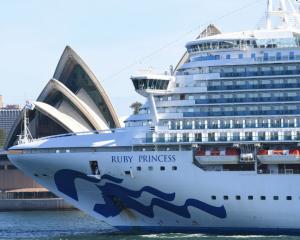
Fiordland Lobster Company chief executive Alan Buckner said the exporting of southern rock lobster, often referred to as crayfish, to China stopped suddenly when the issues around coronavirus became known.
‘‘Things just turned on a dime a week ago,’’ he said.
‘‘Chinese New Year is a big celebration and our sales were really strong leading up to the event.
‘‘Within days when it became evident there was an epidemic on China’s hands with coronavirus — things just stopped.’’
Fiordland Lobster Company, based in Te Anau, makes up about 40% of this country’s crayfish industry and its Australian subsidiary, the South Australia Lobster Company, makes up about 20% of the industry there.
Mr Buckner said the industry had regrouped quickly and was discussing with Fisheries New Zealand ways to manage the financial impact of the sudden closure of the Chinese market.
China took 95% to 98% of all commercial crayfish landed in New Zealand.
‘‘Not just our company but for the industry, all roads lead to China,’’ Mr Buckner said.
‘‘For the industry all geared up for Chinese New Year, plenty of inventory in the supply chain to support the demand up in China and with it just stopping most New Zealand exporters have been caught with a volume of inventory in their system.’’
He predicted that volume to be between 40 and 80 tonnes of live crayfish — something like 1.8million individual rock lobsters.
His company had about two to three weeks to make a decision on what to do with them.
‘‘Lobster is a high value, but highly perishable product,’’ Mr Buckner said.
‘‘Time is of the essence.
‘‘Our company has got leading edge water systems — so we control their environment and provide an ideal environment for the lobster that we have.
‘‘But, we’re talking two to three weeks when we will have had to have sold that fish or do something else with it.’’
Possible back-up plans included putting the catch back in the ocean, but that would require approval from Fisheries New Zealand, Mr Buckner said.
It was also likely that if exporters continued to be cut off from the China market, many New Zealand fishermen would not reach their quotas for the year to March 31.
Mr Buckner predicted about 400 tonnes of crayfish quota would not be caught by the end of March.
‘‘There will be some significant financial impact of not being able to catch their quota for the year,’’ Mr Buckner said.
‘‘Fisheries New Zealand are also looking at providing a carry forward provision where they’ll allow the uncaught quota this year to be caught in the new fishing season along with the new quota allocation.’’
Exporters would look to other markets such as Malaysia, Singapore, the United Arab Emirates and Japan.
However, those were only minuscule compared with China, Mr Buckner said.
The domestic market continued to accommodate an oversupply of the product; prices were at $35 a crayfish at Harbour Fish in Dunedin and Otago.
‘‘Clearly, oversupply versus the domestic demand ... there has been an immediate impact on price,’’ Mr Buckner said.
Comments
I'm expecting vast numbers of really cheap fresh lobsters flooding the local market any day now, as industries offload their unshiftable-to-China catch...
Any day now...any day now...
Any day now...











